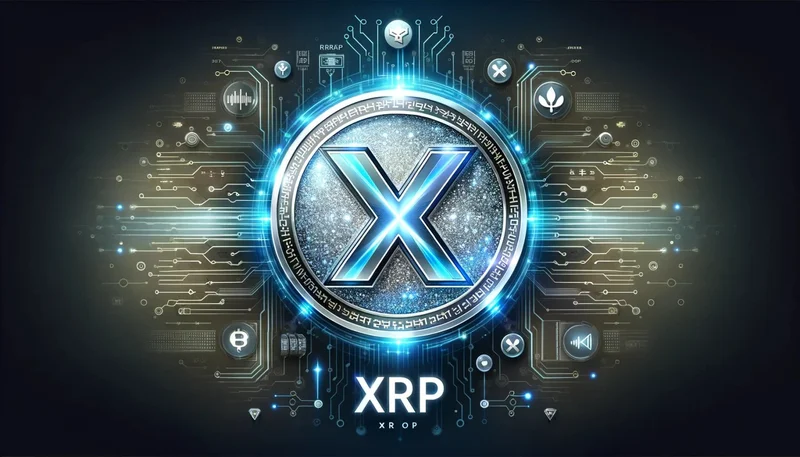Article Directory
Generated Title: Anatomy of a Meltdown: Deconstructing the XRP Flash Crash
On October 11, the market for XRP didn't just dip; it fell off a cliff. For a few frantic hours, anyone watching the charts saw a digital asset in freefall. The numbers tell a clinical story of panic: a 42% drop from a high of $2.82 to a gut-wrenching low of $1.64. It was the kind of violent, high-volume event that purges a market, shaking out the leveraged and the fearful in one swift motion, an event captured by XRP Price News: Ripple Plunges 40% Before Recovering to $2.20 - CoinDesk.
This wasn't a slow bleed. It was a sudden, catastrophic failure of the price floor. To understand what happened, we can't just look at the ticker. We have to perform an autopsy on the data, peel back the layers of the order book, and examine the mechanics of the collapse. The story of the `XRP price` that day wasn't about a fundamental shift in value; it was about structural fragility, regulatory anxiety, and a cascade of forced selling that fed on itself. What we saw was a system under extreme stress, and the data it left behind is a blueprint of its breaking points.
The Architecture of the Cascade
Let’s be precise. The engine of this crash was liquidation. Over-leveraged long positions were systematically dismantled. We saw $21 million in long liquidations vaporized against a mere $2 million in shorts. This wasn't a two-sided debate about the future `ripple xrp price`; it was a one-sided slaughter. The market wasn't selling because of a change in belief. It was selling because it was forced to.
The institutional footprint is clear. Futures open interest—a proxy for institutional capital at play—dropped by about $150 million. To be more exact, it fell from $9.0 billion to $8.85 billion. While not a catastrophic percentage of the total, its concentration within a single trading session points to a cohort of large players either getting wiped out or aggressively de-risking. It’s the digital equivalent of seeing a plume of smoke rise from the corner of the trading floor; everyone turns to look, and nobody wants to be the last one out of the building.
I've looked at hundreds of these market events, and this particular pattern is unusual. The groundwork for the crash appears to have been laid in the week prior. On-chain data shows 320 million XRP being moved onto exchange wallets. Think of this as stacking ammunition next to a cannon. Moving assets to an exchange signals an intent to sell, and that much supply hitting the market creates immense downward pressure. It’s like pouring water into a bucket that already has a hole in it; you don’t know exactly when the bottom will fall out, but you know it’s unstable.

Was this a coordinated attack or simply a confluence of nervous sellers sensing a top? The data can't give us a definitive motive, but it does show us the result. The most intense selling occurred between 15:00 and 21:00 UTC, a six-hour window where the system was overwhelmed. This concentration suggests the initial liquidations triggered a domino effect, a self-sustaining chain reaction of margin calls and forced selling. The question isn't whether the first domino fell, but who lined them all up so perfectly?
A Tale of Two Markets
Zooming out, this meltdown didn't happen in a vacuum. The ecosystem was already tense. The deadline for Ripple’s National Trust charter had passed on October 7 without resolution, hanging a cloud of regulatory uncertainty over the asset. For institutional products, regulatory clarity isn't a "nice-to-have"; it's a prerequisite. That missed deadline (a crucial milestone for the kind of regulated products institutions need) likely spooked a significant portion of the professional money that had been driving the recent rally. It was a known unknown, and markets detest uncertainty.
And this is the part of the report that I find genuinely puzzling. While the futures market was imploding, a completely different story was unfolding on-chain. As the price spiraled below $2.40, long-term holders weren't panicking. They were buying. This is a classic divergence between the paper market and the physical (or in this case, digital) asset market. One group, likely trading with leverage, was forced to sell. Another group, presumably trading with their own capital, saw a discount and acted on it.
The late-session activity confirms this. In the final 15 minutes of the session, over 12 million in accumulation volume was recorded, helping to establish the $2.36 floor where the price eventually stabilized. You could almost feel the momentum shift as the forced sellers were exhausted and the value buyers stepped in. It was a battle between two fundamentally different market participants, fought with billions of dollars in a matter of hours.
This raises the most important question: who represents the "true" market for XRP? Is it the leveraged futures traders whose positions can be wiped out by a 10% swing, or the on-chain holders who treat a 40% crash as a buying opportunity? The answer likely determines the asset's long-term trajectory. Watching the current `ripple xrp news`, traders are now focused on whether accumulation can hold the $2.30 support level. What they’re really watching is which of these two factions wins the next round.
The Signal in the Noise
When the dust settled, the October 11 flash crash wasn't just a random market spasm. It was a diagnostic event. It was a painful but necessary stress test that revealed the deep fracture between the leveraged, sentiment-driven paper market and the conviction-driven on-chain holders. The event wasn't a verdict on Ripple or the utility of XRP. It was a purification. It violently purged the over-leveraged tourists and, in the process, revealed the price level where the true believers were willing to make their stand. The real story isn’t how far the `xrp price` fell; it’s who was waiting at the bottom to catch it.
